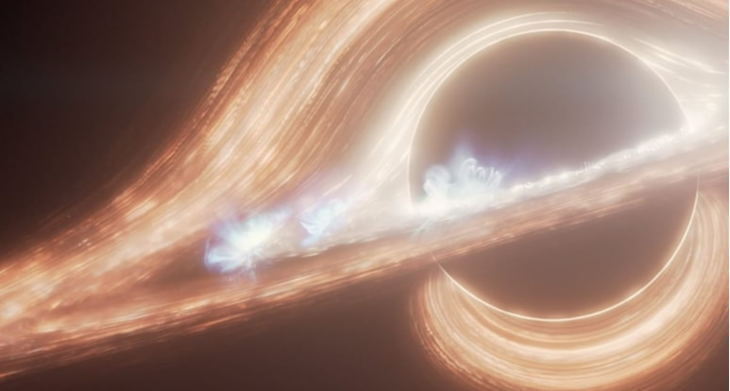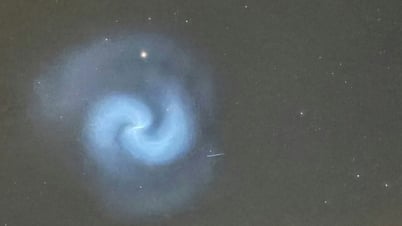
This lone black hole without a companion star is located about 5,000 light years from Earth - Photo: NASA
An international team of scientists has just confirmed the existence of the first lone black hole in the Milky Way: one without any companion stars orbiting it.
This discovery was published in early April 2025 in the astronomy journal The Astrophysical Journal , based on data collected from the Hubble space telescope and the Gaia probe of the European Space Agency (ESA).
Previously in 2022, a research team led by astronomer Kailash Sahu at the Space Telescope Institute (STScI), Baltimore (USA) discovered a dark object that did not emit light in the constellation Sagittarius.
However, at that time, scientists were still arguing about the true nature of this object, with some suggesting that it could be a neutron star.
Not giving up, the team continued to analyze new data collected in 2021-2022. Combined with data from 2011-2017, they confirmed that the object has a mass of about seven times that of the Sun. This mass exceeds the mass limit of neutron stars and is most likely a single black hole.
Unlike previous black holes discovered through interactions with companion stars, this one was discovered when it accidentally passed in front of a distant background star.
Thanks to the gravitational lensing effect, the phenomenon of bending light caused by the black hole's extremely strong gravity, scientists have noticed that the light from the background star is magnified and briefly shifted. This is an important sign to help determine the presence of an invisible object in space.
This lone black hole is about 5,000 light-years from Earth, significantly closer than the supermassive black hole Sagittarius A* at the center of the Milky Way, which is about 27,000 light-years away.
This is considered the first evidence that a black hole can exist independently, without interacting with a companion star to reveal itself. This discovery opens up the possibility of discovering many other "invisible" black holes wandering the universe.
Following this success, the team hopes to discover more solitary black holes with the help of NASA's Nancy Grace Roman Space Telescope, which is scheduled to launch in 2027.
With modern technology, the new telescope will allow scientists to examine dark objects more deeply, contributing to unraveling the mystery of the number and nature of black holes in our galaxy.
Source: https://tuoitre.vn/lan-dau-phat-hien-ho-den-don-doc-trong-dai-ngan-ha-20250423144744143.htm




























































































Comment (0)